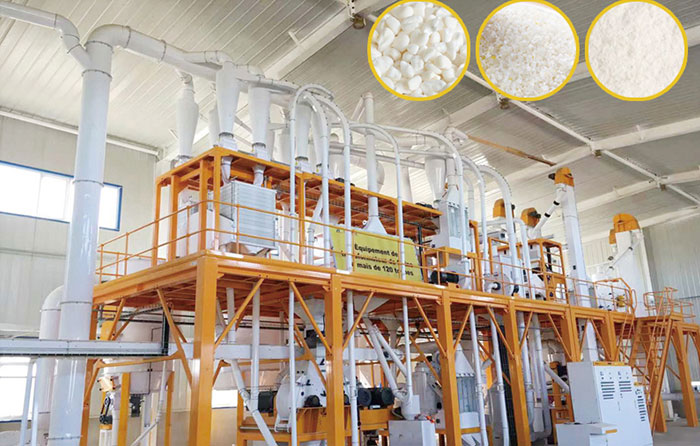Maize flour milling plants are vital for processing maize kernels into flour, a staple food worldwide. This guide provides a detailed overview of designing, operating, and maintaining these plants to ensure efficient production and high-quality flour.

1.1 Choosing the Right Location:
Selecting a suitable location involves considering factors such as proximity to raw material sources, transportation infrastructure, and access to utilities like water and electricity. A well-planned location can reduce costs and improve operational efficiency.
1.2 Equipment Selection:
Essential equipment in a Maize Mill Machine includes cleaning machines, dehullers, germ extractors, and milling machines. Understanding the functions of each machine helps in selecting the appropriate ones based on production capacity and desired flour quality.
1.3 Plant Layout and Flow:
Efficient plant layout design ensures a streamlined workflow. Proper segregation of different process areas, such as receiving, cleaning, milling, and packaging, helps prevent cross-contamination. Hygiene practices, including regular cleaning and maintenance of equipment, are crucial for producing safe and high-quality flour.
2.1 Pre-milling Processes:
Cleaning and sorting maize kernels remove impurities and foreign matter. Moisture control and conditioning techniques optimize the milling process and improve flour quality. Pre-milling treatments like tempering and degermination further enhance the flour characteristics.
2.2 Milling Process:
The milling process involves breaking down maize kernels into different particle sizes to obtain flour of desired fineness. Dry milling and wet milling are common techniques used. Each milling machine, such as roller mills and hammer mills, has a specific function and can be adjusted to achieve the desired flour output.
2.3 Flour Handling and Packaging:
Post-milling processes involve sifting the flour to remove bran and other coarse particles. Grading ensures uniform flour quality. Proper packaging techniques maintain flour freshness and prevent contamination. Quality control measures, including regular testing and analysis, are essential for delivering consistent flour products.
3.1 Routine Maintenance Practices:
Regular cleaning and lubrication schedules for machinery help prevent operational issues. Inspecting critical components, such as bearings and belts, identifies potential problems early. Implementing preventive measures, such as installing backup systems and conducting routine maintenance checks, minimizes unexpected breakdowns.
3.2 Troubleshooting and Repairs:
Understanding common issues like machine blockages, uneven flour distribution, and power fluctuations enables timely troubleshooting. Step-by-step procedures for identifying causes and resolving problems ensure uninterrupted operations. Proper repair and replacement considerations, including sourcing spare parts, are essential for efficient maintenance.
3.3 Safety and Compliance:
Creating a safe working environment for plant personnel is crucial. Adhering to safety regulations and standards, such as proper machine guarding and personal protective equipment (PPE), minimizes accidents. Training programs for employees on equipment operation and emergency protocols further enhance safety.
This comprehensive guide equips individuals involved in maize flour milling plants with the knowledge necessary for designing, operating, and maintaining these facilities. By implementing the principles and best practices outlined, operators can optimize production, ensure flour quality, and prolong the lifespan of milling equipment. Continuous learning and strict adherence to safety protocols are vital for sustainable and successful operations.
Previous: Hydrogen Peroxide Plant: Manufacturing Process and Applications
Next: Unlocking Precision and Efficiency: How Fiber Laser Cutting Machines Work
Comments
Please Join Us to post.
0